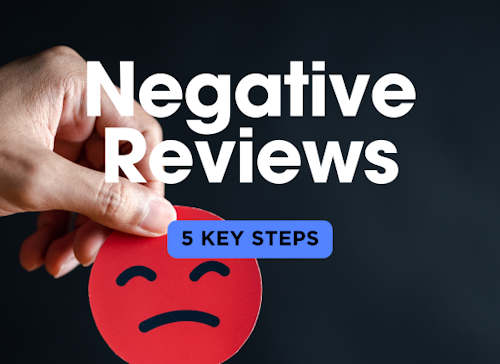Negative reviews can be challenging to deal with, especially when they appear online for all to see. However, how you respond to these reviews can shape your brand’s reputation and customer trust. Handling criticism professionally and effectively not only helps resolve issues but also shows potential customers that you care about their experience. Here’s a step-by-step approach to manage negative reviews and turn them into opportunities for growth.
1. 🧘 Stay Calm and Don’t React Emotionally
The first and most important step is to remain calm when you come across a negative review. Emotional reactions or defensive responses can escalate the situation and make things worse. Take time to cool off and assess the review objectively before responding.
- Why it’s important: Responding while upset can lead to unprofessional or defensive language that could damage your reputation further.
- What to do: Pause, take a deep breath, and wait until you can approach the review with a clear mind. Think about how you would want a business to respond to you in a similar situation.
- Pro Tip: If possible, share the review with a trusted colleague to get a second opinion before crafting your response.
2. 👂 Acknowledge the Complaint and Show Empathy
Customers want to feel heard. Begin your response by acknowledging the reviewer’s concerns and showing empathy for their experience. Even if the issue seems small or unjustified, addressing it with understanding will help diffuse any tension and demonstrate that you care.
- Why it’s important: Acknowledging the issue shows that you take customer feedback seriously and are willing to address their concerns.
- What to do: Start your response by thanking the customer for their feedback and apologizing for any inconvenience they may have experienced. For example, “We’re sorry to hear about your experience and appreciate you bringing this to our attention.”
- Pro Tip: Personalize your response by using the customer’s name and referring to specific details from their review.
3. 🔧 Offer a Solution or Ask for More Information
Once you’ve acknowledged the issue, the next step is to offer a solution or ask for more information to better understand the problem. This shows that you’re proactive about resolving the situation. If you can resolve it publicly, it can leave a positive impression on future customers.
- Why it’s important: Offering a solution demonstrates that you’re committed to customer satisfaction and want to make things right.
- What to do: Propose a reasonable solution or invite the reviewer to contact you directly to discuss the matter further. For example, “We’d like to make this right. Please contact us at [email] so we can resolve the issue.”
- Pro Tip: If possible, take the conversation offline to resolve it privately, and follow up once the issue is resolved to close the loop.
4. 📝 Respond Publicly, But Take Further Action Privately
It’s crucial to respond publicly to negative reviews to show other potential customers that you address issues. However, more in-depth discussions or resolutions should happen privately. This ensures that sensitive information is handled discreetly and allows for a more personal resolution.
- Why it’s important: Public responses show transparency, while private actions help resolve the issue thoroughly without additional public scrutiny.
- What to do: Respond publicly with empathy and a brief acknowledgment of the issue, then ask the reviewer to reach out directly to continue the conversation privately.
- Pro Tip: After resolving the issue privately, ask the customer if they would consider updating their review to reflect the resolution.
5. 💬 Follow Up and Encourage Positive Reviews
Once the issue has been resolved, it’s important to follow up with the customer to ensure they are satisfied with the solution. A follow-up shows that you genuinely care about their experience and are committed to improving your service. If the customer is happy with the resolution, kindly ask them to consider updating their review or leaving a positive one.
- Why it’s important: Following up leaves a lasting positive impression and can help turn a negative review into a positive testimonial.
- What to do: Send a polite follow-up message thanking them for working with you to resolve the issue, and ask if they’d be willing to update their review. Keep the tone friendly and professional.
- Pro Tip: Encourage other satisfied customers to leave positive reviews as well, to help balance out any negative ones and boost your overall rating.
Handling negative reviews effectively can turn a potentially harmful situation into an opportunity for growth. By staying calm, showing empathy, offering solutions, and following up, you can improve your customer relationships and showcase your commitment to excellent service. Dealing with criticism in a professional, thoughtful manner not only improves your reputation but also builds trust with future customers. With these steps, you can turn negative feedback into a positive reflection of your business.



